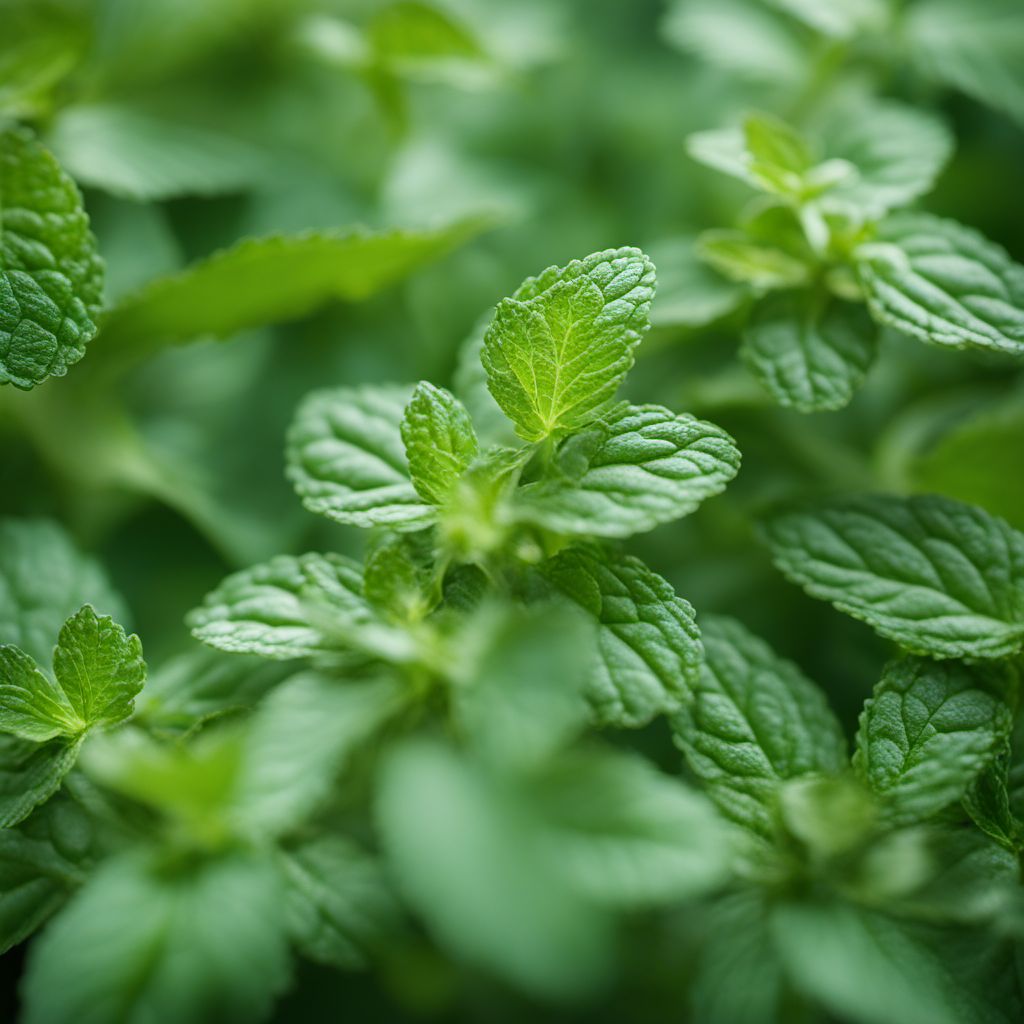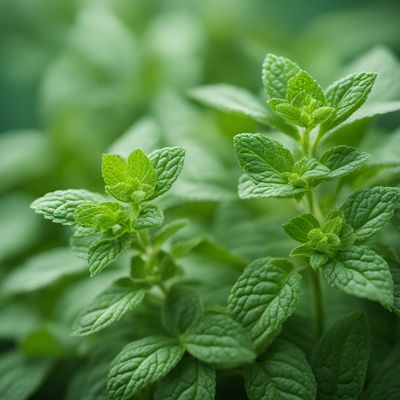
Ingredient
Peppermint
The Refreshing Herb: Peppermint
Peppermint is a perennial herb with bright green leaves and a strong, minty aroma. It has a cool, refreshing taste with a hint of sweetness. The leaves are often used fresh or dried in teas, desserts, and savory dishes to add a burst of flavor and aroma.
Origins and history
Peppermint is believed to have originated in the Mediterranean region and has been used for centuries in various cultures for its medicinal properties. It was introduced to North America by European settlers and is now cultivated worldwide.
Nutritional information
Peppermint is low in calories and contains small amounts of vitamins A and C. It is known for its digestive benefits and can help relieve symptoms of indigestion and nausea. However, it may cause heartburn or allergic reactions in some individuals.
Allergens
May cause heartburn or allergic reactions in some individuals.
How to select
When selecting fresh peppermint, look for vibrant green leaves without any signs of wilting or discoloration. Dried peppermint leaves should be fragrant and free from moisture. Avoid wilted or discolored leaves. Peppermint can also be grown in home gardens by planting cuttings or seeds in well-drained soil and providing ample sunlight and water.
Storage recommendations
Fresh peppermint leaves can be stored in the refrigerator wrapped in a damp paper towel for up to a week. Dried peppermint leaves should be stored in an airtight container in a cool, dark place.
How to produce
Peppermint can be easily grown in home gardens by planting cuttings or seeds in well-drained soil and providing ample sunlight and water. It is a fast-growing herb that can be harvested throughout the growing season.
Preparation tips
To use peppermint, simply pluck the leaves from the stem and add them to recipes as desired. Peppermint leaves can be used fresh or dried in teas, cocktails, desserts, and savory dishes. They can also be infused into oils or used as a garnish.
Substitutions
Spearmint can be used as a substitute for peppermint, although it has a milder flavor. Peppermint extract or oil can also be used in place of fresh or dried peppermint leaves.
Culinary uses
Peppermint is commonly used in teas, such as peppermint tea or Moroccan mint tea. It is also used in desserts like peppermint ice cream, chocolates, and candies. In savory dishes, peppermint adds a refreshing twist to salads, sauces, and marinades.
Availability
Worldwide
More ingredients from this category

Apple mint
Refreshing Minty Twist

Pennyroyal
The Versatile Herb: Pennyroyal

Spearmint
"The Refreshing Herb: Unveiling the Delights of Spearmint"

Corsican mint
"The Refreshing Delight: Discover the Aromatic Magic of Corsican Mint"

Other species and hybrids of genus Mentha, not elsewhere mentioned
The Aromatic Herb Family

Bergamot mint
The Citrus Twist

Water mint
"Refreshing Twist: Exploring the Delights of Water Mint"

Gingermint
The Perfect Blend of Zesty Ginger and Refreshing Mint